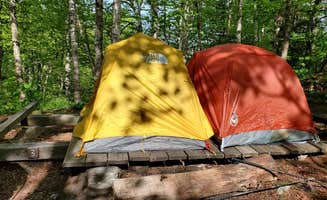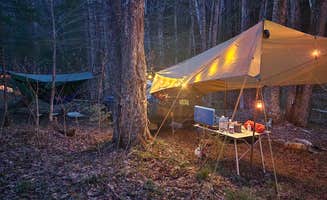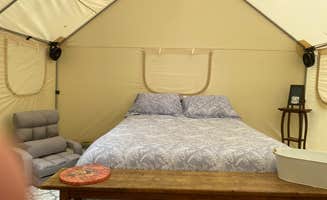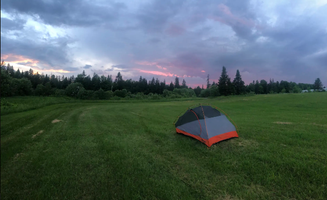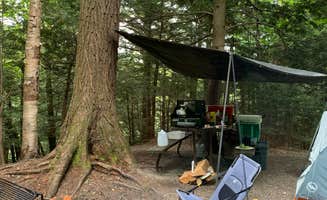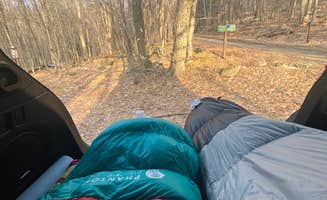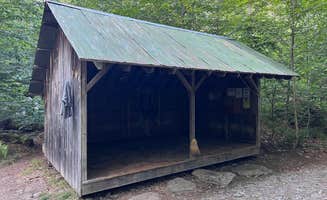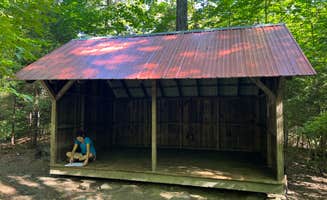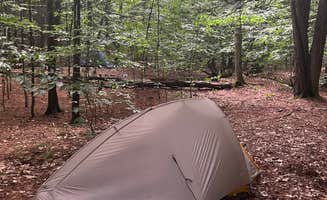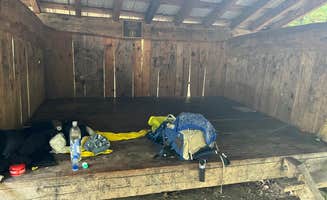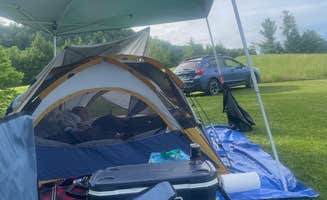Dispersed tent camping near Northfield, Vermont places campers between the 3,500-foot ridges of the Green Mountains and the rolling hills of the Northfield Range. Winter access requires 4WD vehicles on most forest roads, with elevations around 1,000-2,000 feet experiencing temperature drops 10-15°F lower than Burlington. Most sites close by mid-October due to snow accumulation, with limited options remaining accessible through early November.
What to do
Fishing opportunities: Multiple spots around Green Mountain National Forest FR25 offer stream fishing. One camper noted, "Gorgeous stream/river...love the river sounds," making it perfect for anglers seeking small brook trout.
Swimming holes: Several unofficial swimming areas exist along creek beds. At Route 100 Dispersed Camping, you'll find "right next to Mad River with an area to walk down into a swimming hole."
Morning summit hikes: Early risers can take advantage of trails that start directly from camping areas. The designated primitive camping area at Camel's Hump State Park is "about 1.5 miles into the hike" with "a host who was there 24/7 and a shared area for eating and food storage."
Wildlife viewing: Dawn offers the best chance to spot deer, wild turkeys, and occasional black bears. Keep food secure in vehicles or proper containers, especially at sites where "Bear's are a problem."
What campers like
Private tent sites: Many dispersed camping areas offer secluded spots. At Michigan Brook Road Camping, campers enjoy "nice little spots to hangout all day. Lots to see, and explore."
Quick access to trails: Several camping areas connect directly to hiking networks. One review mentioned "a .3 mile hike to the main trail to climb the mountain" from Underhill State Park Campground.
Natural water features: Almost every camping area sits near water. At Patterson Brookside, "Mountain road lingers along the river. There's quite a few sites along the road," offering pleasant background noise for sleeping.
Fall foliage viewing: Late September through mid-October provides peak foliage colors. Many sites offer "epic" views of color changes throughout the Green Mountains.
What you should know
Primitive facilities: Most dispersed sites have no amenities. At Patterson Brookside camp on West Hill Road, "There is no electricity, no cell coverage, not outhouses in this area. Be prepared to pack out everything you bring in."
Site selection timing: Arrive early Thursday or Friday to secure weekend spots. During summer, "Saturday night all spots filled" at popular areas like FR25.
Site closures: Several areas face potential shutdown due to misuse. At FR25, "a NFS sign along FR-25 posted asking people to clean up after themselves (litter and human waste) as there'd been complaints to the extent that they were considering closing the sites if people didn't do better."
Unofficial vs. official sites: Some locations marked as camping areas have conflicting signage. Route 100 has "signs say No Camping" though enforcement varies as "there was someone camping for a least a week."
Tips for camping with families
Platform tent sites: For easier camping with kids, seek out tent platforms that keep sleeping areas dry. Molly's Falls Pond State Park offers "5 unofficial, remote campsites" that work well for families seeking a primitive experience with lake access.
Swimming access: Look for gentle water entry points for children. Molly's Falls Pond has a "boat launch with 2 fishing platforms" and "swimming is allowed off the shoreline."
Noise considerations: Family camping requires choosing sites away from popular party areas. Some dispersed sites have "people really entrenched with string lights etc." which can mean late-night activity.
Food storage: Areas with wildlife require proper storage. At Camel's Hump, there's "a shared area for eating and food storage" since bears frequent the area.
Tips from RVers
Road conditions: Many forest roads have challenging access. At Michigan Brook Road, "Some parts are muddy and very rough. Higher clearance would be advised!!!"
Size limitations: Most dispersed sites accommodate smaller rigs only. Green Mountain Forest roads often become "single lane in a few locations, so be aware of oncoming traffic."
Seasonal access: RV camping generally ends by mid-October. Winter access requires "snowshoes or a snowmobile" as most forest roads aren't plowed.
Turnaround space: Many roads lack proper turnaround areas. When exploring potential sites, "I didn't go down a couple little gravel paths to check each spot as you couldn't turn around easily."


